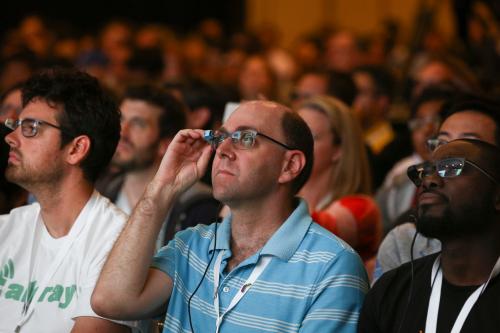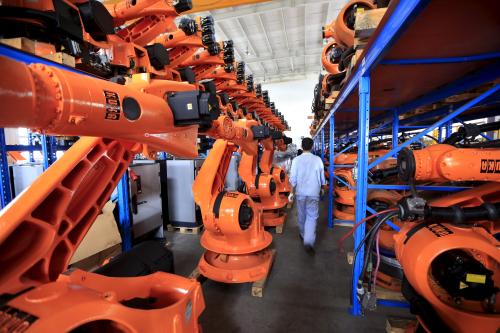In 2012, venture capitalist and entrepreneur Marc Andreesen predicted that jobs will be divided between “people who tell computers what to do, and people who are told by computers what to do.” Already, smartphones and other internet-connected devices assign work in a wide variety of environments, from Amazon warehouses to city streets. Workers that take assignments from computers may see their jobs completely automated as artificial intelligence and robots become more capable over time. However, these same devices also have the potential to train workers in new skills and ride out successive waves of automation.
Skills training typically comes through higher education or from companies themselves. However, rising college tuition costs and shrinking investments in training reduce the opportunity for employees to acquire the skills needed for new kinds of work. Now, newly-emerging technologies may help to fill this void in skills training. Augmented reality and virtual reality can bring computers to manual jobs far removed from an office, giving companies and workers more options for how and where retraining takes place. Rather than requiring employees to go to a classroom or an online portal, AR and VR headsets can teach workers new skills on-site.
Computers beyond the office
Automation was once primarily the domain of factories and other controlled environments where machines could replace manual labor. Next, mainframe and personal computers took over cognitive labor in laboratory and office settings. Now, smartphones and other internet-connected devices enable workers to carry computers with them wherever they go. Thus equipped, a worker can take on manual tasks assigned by a computer that has taken over much of the cognitive work.
This division of labor between humans and computers occurs in diverse settings. In Amazon warehouses, handheld scanners navigate employees to each item included in an order. Ride-hailing apps like Uber and Lyft accomplish a similar task on city streets, telling drivers where to pick up and drop off passengers. Food delivery apps have created a growing number of “virtual restaurants” with no tables: an app tells cooks what food to prepare and tells delivery drivers where to take each order. Humans are currently more capable than robots at grasping odd-shaped objects, driving in sub-optimal conditions, and preparing many kinds of food. However, Amazon, Uber, Lyft, and robotics companies are each investing in research and development to automate these tasks. We may not be far from a time where robots and artificial intelligence handle the preparation and delivery of e-commerce and food orders.
Computer training, not replacement
Computers need not replace humans if they can instead train humans wherever their work takes them. In a growing number of industries, augmented reality headsets overlay the technical knowledge typically learned in a classroom setting onto manual jobs in the workplace. The reverse can occur as well: virtual reality headsets and handheld controllers can simulate hands-on training inside a classroom setting. Making training more informative and interactive for workers can reduce the necessary time to gain experience. This applies both to new workers with few skills, and mid-career workers learning new skills.
Accelerating training can create a more flexible workforce for employers. Though AR and VR headsets themselves are still relatively expensive, their cost can spread out over many employees. Training can be easily reconfigured for new skills needs and can be replicated anywhere that employees are located. By contrast, a human trainer would need to learn new skills themselves and then teach in a centralized classroom or travel to workers in field locations. Whether spread across many factories or working on location, AR and VR headsets allow workers to apply technical knowledge when and where it is needed.
New methods for training workers reveal greater possibilities for the future of work. Rather than relying on a single skillset, workers will be able to upgrade their skills more quickly and efficiently throughout their career. This approach benefits industries where generations of technology advance much faster than generations of workers. Augmented reality and virtual reality may not be able to enhance every job, but they can add a digital layer to many manual tasks far removed from an office. Rather than replace workers, working with an AR or VR headset can give people the necessary skills to adapt to the 21st century economy.
Amazon is a general, unrestricted donor to the Brookings Institution. The findings, interpretations, and conclusions posted in this piece are solely those of the author and not influenced by any donation.
The Brookings Institution is committed to quality, independence, and impact.
We are supported by a diverse array of funders. In line with our values and policies, each Brookings publication represents the sole views of its author(s).










Commentary
Emerging technology can replace workers — or train them for new work
August 29, 2019